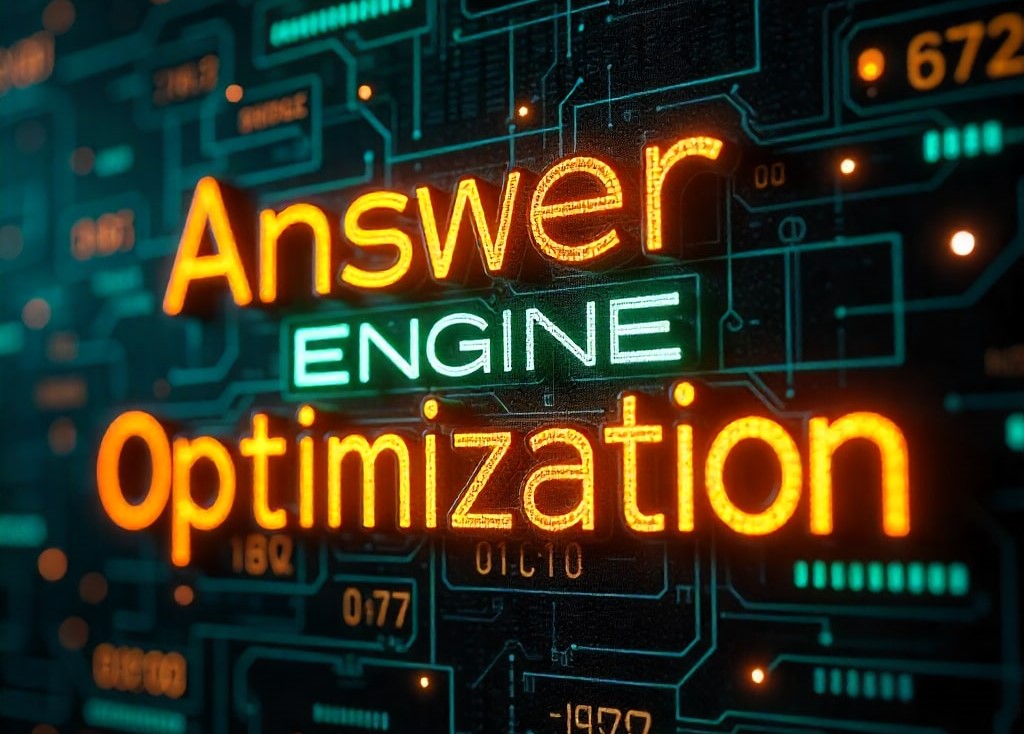Understanding SEO, AEO, and GEO: What are they and how do they work?
Date : 29 Sept 2025
Whether on Google, voice assistants like Alexa, or local map searches, you need more than just good content. That’s where SEO, AEO, and GEO come in. These three strategies help your business show up exactly where (and when) your audience is looking. In this post, we’ll simplify what each of them means, how they work, and why they’re the secret to getting discovered online.
1. SEO (Search Engine Optimization): In its simplest form, SEO is the process of making your website and content easier for search engines (such as Google, Bing, etc.) to recognize, understand, and rank on their search results pages. This process is necessary for your content to get “organic” traffic, that is, free visitors for their queries relevant to your business. SEO encompasses various features, including technical SEO, on-page SEO, and off-page SEO. To learn about SEO in detail, check out here. We can use a backlink from one of our old blogs about SEO.
How SEO works-
- Crawling and Indexing: Search engines ‘crawl’ (read through) pages and add them to an index, which is one of the many necessary steps that are considered to rank content in order of relevance. Incorporating SEO makes sure that your pages are reachable and crawlable, and not blocked.
- Ranking Signals: Engines evaluate many signals ranging from content relevance (as mentioned in the previous point), to backlinks, mobile friendliness, etc. to rank pages. SEO is a way to check off these boxes and make it possible for you to rank.
2. AEO (Answer Engine Optimization): Answer engines are the featured snippets, voice assistants, and AI chat assistants that return direct answers to your queries (like Bing Chat, ChatGpt, etc.). And AEO is optimizing content so that these answer engines use your content as the answer to someone’s query. So that instead of having to click on your website or content, your goal can be to be the answer the user sees at first glance.
How AEO works-
- Crisp Content: Answer engines prefer clear, short paragraphs, lists, tables, or step-by-step instructions, and content that is structured in the simplest manner so it’s easy to extract from the source and cite directly – examples are FAQs, Q&As, etc.
- Trust Signals: AI systems favor trustworthy sources for answers, and therefore, modern AEO selects its output depending on trust signals as well. These trust signals could be citations, backlinks, brand reputation, the quality of the source, etc.
3. GEO (Geotargeting / Local SEO): In marketing, GEO refers to location-based targeting. Location-based targeting is basically targeting possible customers who are within a specific geographic region. This way, when they look up something that is relevant to your business while they are near your office, your business will pop up on the searches. For small businesses, this is most often called Local SEO.
How GEO works-
- Search engines use information from your business’s Google Business Profile (reviews, location, name, address, number, proximity, and geographic signals) to decide when to show your business and in what ranking. Keeping your profile complete and verified is crucial for this.
Key Differences between SEO, AEO, and GEO
| Basis of Comparison | SEO | AEO | GEO |
|---|---|---|---|
| Main Goal | Get ranked and clicks on being searched | Be the direct answer (without having to be clicked on) | Appear in maps |
| Best for | Any website wanting traffic | Sites answering FAQs, how-to’s voice search | Local businesses (café’s, plumbers, salons) |
| Signals | Keywords, backlinks, speed, UI/UX | Short and crisp answers, schema, relevance | Name-address-phone, reviews, proximity, Google Business Profile |
| User Intent | In search of information | In search of short factual queries | “Near me” / local intent |
| Example | A blog about Ad Campaigns ranks 3rd on Google | ‘How to format tables on Excel’ guide read by Siri | The cafe shows up in Google Maps |
What do Marketers and Small Business Owners need to know
For small businesses navigating the digital landscape, these three areas stand out as essential priorities.
-
SEO is the foundation. Under it falls the following:
- It focuses on building strong on-page basics like optimized title tags, meta descriptions, H1s, short URLs, and unique content tailored to user intent.
- Alongside this, technical health plays a key role too. Ensuring mobile-first design, functional sitemaps, and proper canonical tags, since Google primarily indexes mobile versions of sites.
- Improving Core Web Vitals such as Largest Contentful Paint (LCP), Cumulative Layout Shift (CLS), and Interaction to Next Paint (INP) enhances both rankings and user experience, with tools like Google Search Console helping to pinpoint issues.
- Backlinks from trusted, relevant sources remain a major ranking signal, while a strong content strategy built on keyword clusters and long-form resources helps small businesses compete in crowded niches.
-
AEO on the other hand, shifts focus to direct answers in featured snippets, AI assistants, and voice search.
- A concise “answer-first” copy, that consists of 40 to 60 words placed upfront, is critical, followed by more detailed content.
- Structured data in the form of FAQ, Q&A Page, or HowTo schema allows search engines to parse questions and answers more effectively.
- Adding trust signals through authoritative citations, updated facts, and dates improves credibility, and combining short, extractable answers with in-depth articles maximizes visibility across answer engines.
-
GEO is indispensable for location-based businesses.
- Claiming and fully optimizing a Google Business Profile (GBP) with accurate categories, hours, and photos is a baseline requirement, while maintaining consistent NAP (Name-Address-Phone) details across directories strengthens local authority.
- Reviews also carry significant weight, not only influencing rankings but also shaping customer trust, so businesses should actively request and respond to them.
- Beyond this, unique local landing pages and the use of local schema markup can help multi-location businesses target specific areas, and creating posts around local events, offers, and guides boosts community visibility – especially as Google continues to expand features highlighting time-sensitive local information.
By integrating SEO, AEO, and GEO into your digital strategy, marketers and small business owners can ensure their content reaches the right audience at the right time. Start by optimizing your website for search engines, craft concise and structured answers for AI and voice assistants, and strengthen your local presence through GEO tactics. Doing so positions your business to be seen, heard, and trusted across the digital landscape.

.png)

